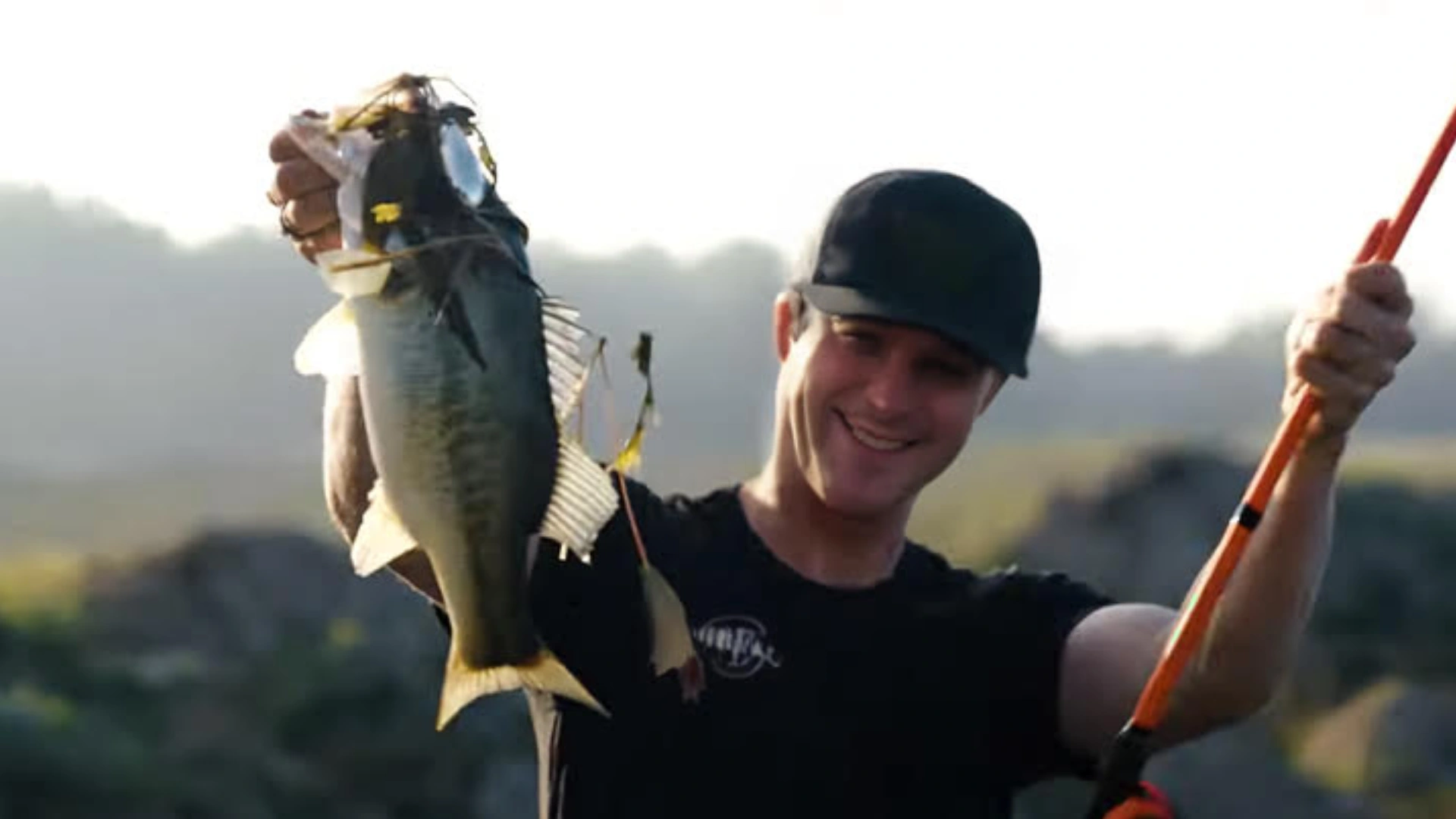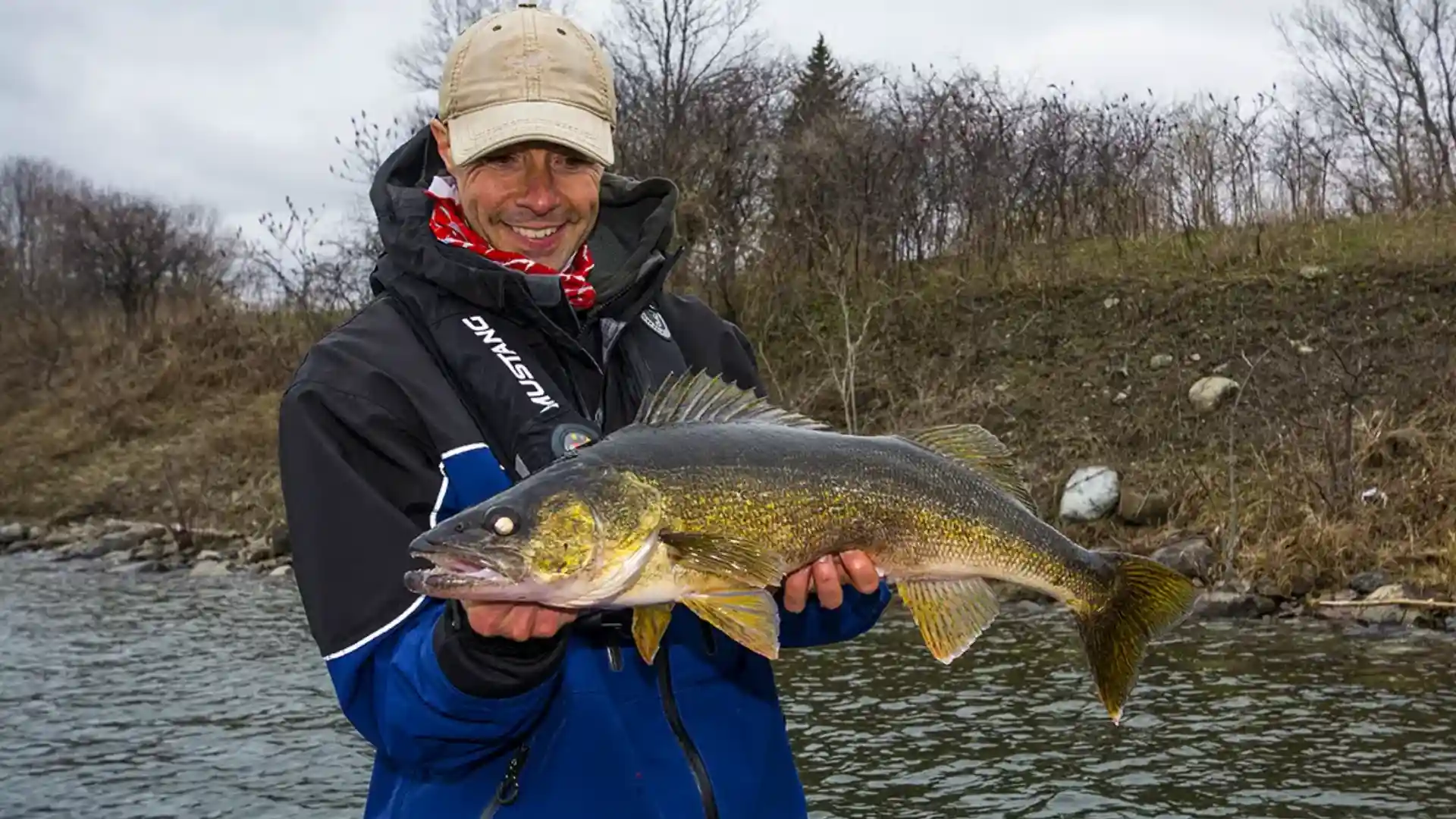How to Hook a Shrimp Bait?
Shrimp bait is undoubtedly the perfect option for catching a wide range of fish species also considered as the best bait for surf fishing. There are different techniques and methods involved in hooking the bait, all of which are necessary for novice anglers to master.

Important
You will only be successful in luring your target if you know the correct way to hook the shrimp.
So, how do you hook a shrimp bait? I am going to explain how you can use different techniques to hook the bait effectively, improving your success in fishing. Therefore, keep reading to learn how to hook up a shrimp to attract fish.
How to Hook a Shrimp Bait
Important
When it comes to fishing, one important aspect you must consider is how you present your bait.
Fishing is not just about casting a line into the water hoping to catch a fish; instead, it involves techniques, precision, and skills. Shrimp is a versatile choice and can be used as bait to lure in black drum, flounder, bonefish, jackfish, pompano, grouper, tarpon, sheepshead, sea trout, snook, redfish, and whiting.

Moreover, you can use the shrimp in a variety of ways, including dead or alive, frozen or fresh, depending on the preferences of the fish you are targeting. In addition, keep in mind that the color, size, and even scent of the shrimp significantly contribute to attracting your target. The following are the techniques you can use to catch your target.
Live Shrimp Hooking Techniques
The way you present your shrimp hook matters a lot in attracting the fish. Fish can understand or recognize the natural movements of the shrimp. Therefore, present your shrimp in a way that keeps them moving just like any other healthy shrimp because if fish witness a shrimp bait moving oddly, including swimming backward or upside down, they will get scared.

1. Frontal Hooking (From Side & Underneath)
The first technique you can apply is by hooking the shrimp through the head. Multiple fishermen use this classical method when fishing bait downstream, keeping the shrimp face into the oncoming tide. Read the following steps to effortlessly hook your shrimp through the head from the sides:
- Hold the shrimp in your hand firmly, but without killing or crushing it, between your non-dominant hand’s index finger and thumb.
- Next, with your dominant hand’s index finger and thumb, hold the hook’s shank.
- Afterward, search for the two dark spots on the upper side of the shrimp’s head. These two dark spots are the organs (brain and stomach) of shrimp. In addition, when inserting the hook, make sure to avoid penetrating these organs to keep your shrimp alive.
- Insert the hook between the two organs (dark spots) through the side of the head, and continue pushing until it comes out on the opposite side.
- Lastly, ensure that the hook shank aligns with the side of the shrimp head.

These were the instructions for how you can hook the shrimp bait from the side; there is also another way. The following are the instructions for inserting the hook from underneath the shrimp:
- Take out your bait and hold it in your non-dominant hand (same as mentioned above).
- After identifying the two dark spots, insert the hook point just beneath the shrimp’s head and push the point on top while avoiding the organs (two dark spots).
- The hook shank must align with the bottom of the shrimp’s head.
This method ensures that your shrimp remains lively for a long duration, increasing the chances of fish taking the bait. However, keep in mind that the choice of the hook also determines how long your shrimp bait will last. Additionally, this method has one drawback, which is that the shrimp will easily come off the hook.
2. Breaking Off the Shrimp’s Tail
This technique positions the head at the front, decreasing the chances of the shrimp coming off the hook when casting. Moreover, breaking off the shrimp’s tail fan releases a delectable scent that attracts your target.
However, using this method, the shrimp’s lifespan will be shorter. Following the following instructions to effectively use this method:

- Grasp the shrimp bait in your non-dominant hand’s index finger and thumb.
- Next, gently snap off the shrimp’s tail by slowing, pulling, and lifting it upwards. After breaking it off, it releases an attractive scent that lures fish towards it.
- For this step, I will advise you to use a hook equipped with barbs on its shanks (baitholder hook) to securely hold the shrimp’s tail in place. Penetrate the point into the fleshy part of the tail from behind.
- Push the point as far as you can, ensuring that the hook point is facing downwards. Afterward, insert the point downward and through the underside of the shrimp. Ensure that the hook point faces the rear and aligns with the shrimp’s stomach.
Another option for you is that, instead of breaking off the tail, you can insert the hook horizontally through the tip of the shrimp’s tail. This method is best if you are fishing in areas with heavy obstructions on the bottom of the water, aside from just weeds. In addition, you can also break off the tail and insert the point through the head, adding an enticing smell while casting into the drift.
3. Via The Tale Tip
If you want to cast further or achieve maximum casting distance when trying to lure cruising fish, hooking the shrimp bait through the tail is the best technique. The most preferable method for straightforward casting and drift-fishing is to insert the hook point through the shrimp’s tail tip.
Multiple experts favor this technique as it lets the shrimp move naturally, and it is easier to hook the fish when it bites the shrimp’s head first. Follow the following instructions to successfully hook the shrimp through the tail:

- With your non-dominant hand’s index finger and thumb, hold the shrimp.
- Insert the hook point through the tail (either horizontally or through the tail’s tip), which allows the body of the shrimp to coil around the shape of the hook.
Pro Tip
This technique is best if you are fishing in calm conditions or during slack tide.
Furthermore, it offers better aerodynamics, which allows you to cast the bait further into deep water. Additionally, hooking shrimp through the tail allows for accurate casts due to the shrimp’s heavier head, which enhances aerodynamic performance.
Preserving Live Shrimp Bait
Do you want to know the best ways to keep your shrimp bait alive? Read the following tips to find out how:
- First of all, look for the right container. You can put the live shrimp in either a single-layer bucket or a two-layer minnow bucket.
- Avoid putting too many shrimps in the bucket, as it can lead to insufficient oxygen for their survival.
- Regularly check the temperature of the water and ensure that shrimp remain in clean and cool water.
- Shrimp need oxygen to survive; hence, you can use an aerator or oxygen-releasing tablets. This will ensure that your shrimps do not end up dead.

Alternatively, if you do not have a bucket, you can use a cooler filled with ice. Next, soak your newspapers into the water and place them on top of the ice.
Afterward, evenly distribute the shrimp on the wet newspaper. Lastly, place another layer of water-soaked newspaper on the shrimps. This method will help your fresh shrimps live for a few hours.
Frozen Shrimp Hooking Technique
Frozen Shrimp Hook
Fishermen also use frozen shrimp as bait because of their attractive scent that can lure fish. The following are the steps to hook your frozen shrimp bait:

- First, detach the different parts of the shrimp’s body. You have the option to remove the shrimp’s head, feet, and tail before inserting the remaining body part onto the fishing hook. However, some anglers choose to skip this step altogether.
- When it comes to frozen shrimp hooks, you can use both head and tail techniques (mentioned above). Both of these methods are acceptable as long as the entire shank of the hood is properly covered.
- If you want to choose between these two methods, I will advise you to go for the technique of “breaking off the tail”. This technique securely holds your shrimp, conceals the hook, and releases an attractive scent.
- However, if you are casting your bait into the moving current, then it is best for you to use the head hook technique.
Preserving Frozen Shrimp

- You can preserve the dead shrimps by putting them in a brine solution and storing them in small jars.
- Take some fresh shrimp, and break off its head, shells, and tails.
- Next, in the bottom of the jar sprinkle salt and layer pieces of shrimp that you cut over it.
- Put another layer of salt over the shrimp and repeat the process.
- Continue the process of layering with alternating salt and shrimp until the jar is full.
- Lastly, you can refreeze unused shrimp, as long as they haven’t spoiled.
Concluding Statement
In conclusion, multiple techniques and methods are available that you can use to hook shrimp bait. With the right techniques, you can increase your chances of successfully catching your target. Moreover, shrimp is a cheap and readily available bait, which makes it an important addition to any surf angler’s gear.






